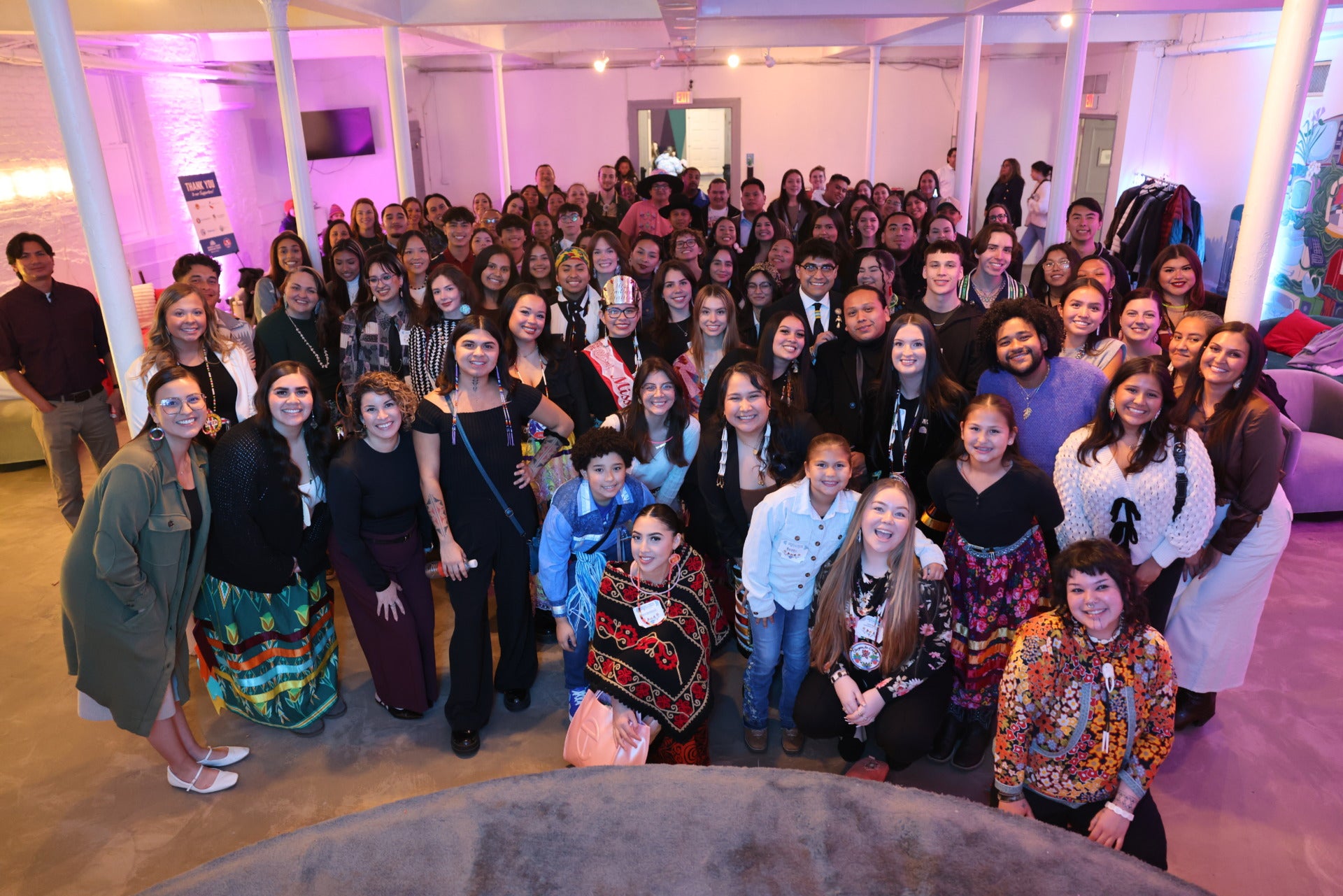10 Ways to Decolonize Your Thanksgiving: Tips from Native Youth Leaders – The Aspen Institute


Every year, millions of Americans sit down to feast on the fourth Thursday of November. Decorative cornucopias, pumpkin pie and turkeys dressed as pilgrims are familiar symbols of the beloved Thanksgiving tradition.
The mythical tale of a peaceful harvest celebration between Pilgrims and the Wampanoag tribe of Massachusetts is as embedded in Thanksgiving lore as gravy and stuffing. What is largely overlooked every Thanksgiving is the genocide carried out by settler colonists on Native American populations. School textbooks uplift a harvest celebration held between the Pilgrims and Wampanoag and ignore the ensuing wars, population decimation and atrocities committed by pilgrims and other settlers.
Four hundred and three years after the ‘first’ Thanksgiving, we recognize the thriving and diverse tribal nations across the United States that continue to survive despite attempted genocide and assimilation. Today, there are 574 federally-recognized tribes, over 100 state-recognized tribes and 400 unrecognized tribes.
This year, the Aspen Institute’s Center for Native American Youth asked our youth to share ways that we can all decolonize Thanksgiving – to better understand our history as a Nation, to uplift and celebrate Indigenous culture and to hold space for truth.
Native youth in Washington DC for the 2024 White House Tribal Youth Forum.
Here’s what they shared:
Native culture is not a monolith and there isn’t a ‘right’ or a ‘wrong’ way to celebrate Thanksgiving. But as Oglala Chef Sean Sherman says, “we do not need the illusion of past unity to actually unite people today. Instead, we can focus simply on values that apply to everybody: togetherness, generosity and gratitude.” Consider doing away with decorative items like pilgrims that romanticize a painful history and instead lean into the shared values that make this day special.
Did you know that about 60% of the world’s food supply originated in North America? (1) Many tribes across North America refer to squash, corn and beans as the ‘three sisters.’ The three crops share a symbiotic relationship and often thrive when grown together using a technique called ‘companion planting.’ Most of the food on your Thanksgiving table originated on this continent, cultivated over centuries by Indigenous peoples. Take a minute to learn the history of the food you’re eating and how it became a mainstream staple in your meals.
There is no evidence that turkey, though indigenous to the Americas, was served at what is now largely considered the first Thanksgiving meal between Pilgrims and the Wampanoag. The Wampanoag people harvest from fresh-water ponds and rivers and likely showed early colonists how to hunt for herring, trout, perch, catchfish and eels, along with deer. (2)
Do research! Find local Indigenous hunters in your area and buy meat directly from them when possible.
If you don’t know what local tribes are in your community, you can start by checking out Native Land Digital, an Indigenous-led nonprofit organization that allows you to input your address and discover whose territory you are on. Take this one step further and be sure to check out your local tribes’ websites to learn about food donations or other volunteer efforts available to allies.
Educate yourself, your family and your friends about the real history of Thanksgiving. Read this Time Magazine article by Oglala Chef Sean Sherman to understand some of the true history and listen to this All My Relations podcast episode highlighting reflections and teachings from two Wampanoag scholars, Paula Peters and Linda Coombs.
If you are given time off from work on Thanksgiving and the holiday has never been your ‘thing,’ consider checking out Unthanksgiving events in your area. Some refer to Unthanksgiving Day as a National Day of Mourning, encouraging reflection and awareness raising about injustices faced by Indigenous communities throughout history.
As one CNAY Youth Leader said, “stop coming to Natives for all the answers.” The first step towards decolonizing your Thanksgiving begins with education. Do the work to learn whose land you are on and then do the work to find local Native businesses and organizations to support. Is there a Native-owned coffee shop, restaurant or bookstore in your neighborhood? Head to the library and read novels and autobiographies by Indigenous authors.
A simple but effective way to decolonize your Thanksgiving is to uplift the voices of Native youth leaders and Native scholars on social media. Post about Unthanksgiving opportunities or historical accounts to help uplift the real history of Thanksgiving.
Give thanks to Mother Earth and her creations/our relatives who put food on our table to nourish us. Take care of the land where you live and learn where your food comes from. What do sustainable agricultural practices look like today?
Youth leaders from the Center for Native American Youth shared personal ways that their family decolonizes Thanksgiving. If you’re Native American and looking for ideas, considering these: (1) pray and sing traditional songs for the meal, (2) decorate your home and dinner table with items that reflect your Native heritage and (3) use the day as an opportunity to come together to pray and give thanks to our ancestors who are the reason we are here.
1 – Park, Sunmin; Hongu, Nobuko; Daily, James W. (2016). Native American foods: History, culture, and influence on modern diets. Journal of Ethnic Food. 3(3). Pages 171-177. ISSN 2352-6181. https://doi.org/10.1016/j.jef.2016.08.001.
2 – Gambino, Megan. (2011). What Was On the Menu at the First Thanksgiving? Smithsonian Magazine. http://bit.ly/4i3fOhK

Tax refunds in early 2026 could be $1,000 to $2,000 larger for many households due to retroactive tax law changes....

Why does it feel like large companies always get the upper hand? Maybe it’s the long contracts with fine print,...

What can you do if you can’t afford college? Maybe the financial aid award wasn’t enough, or you only want...